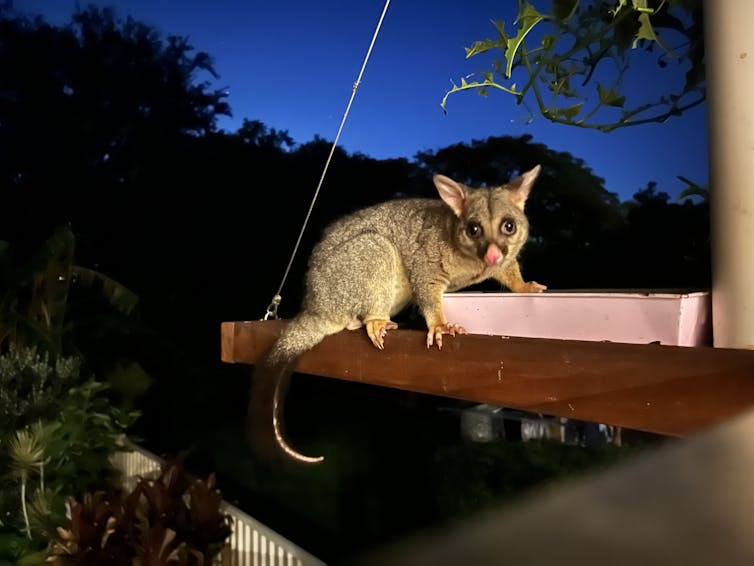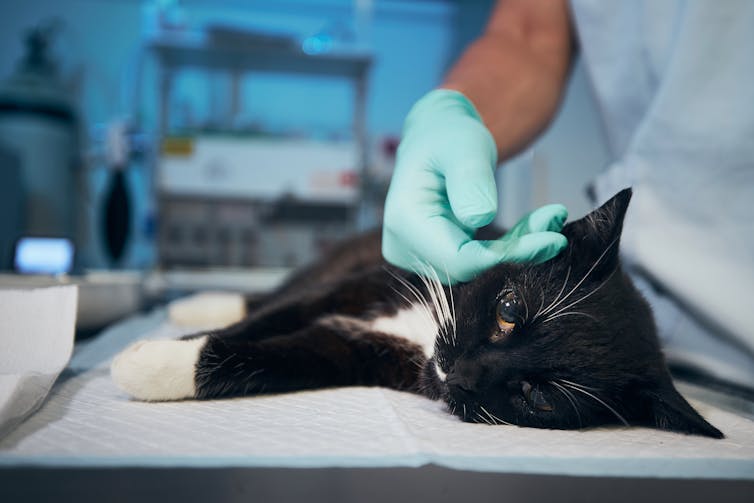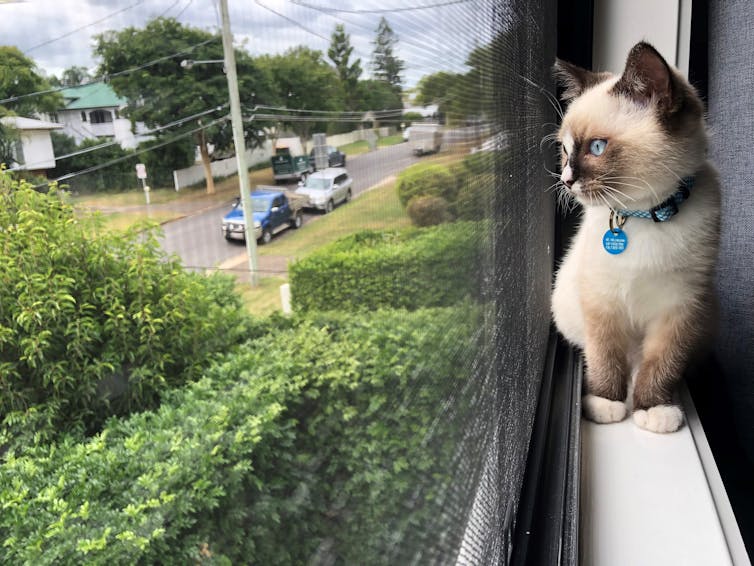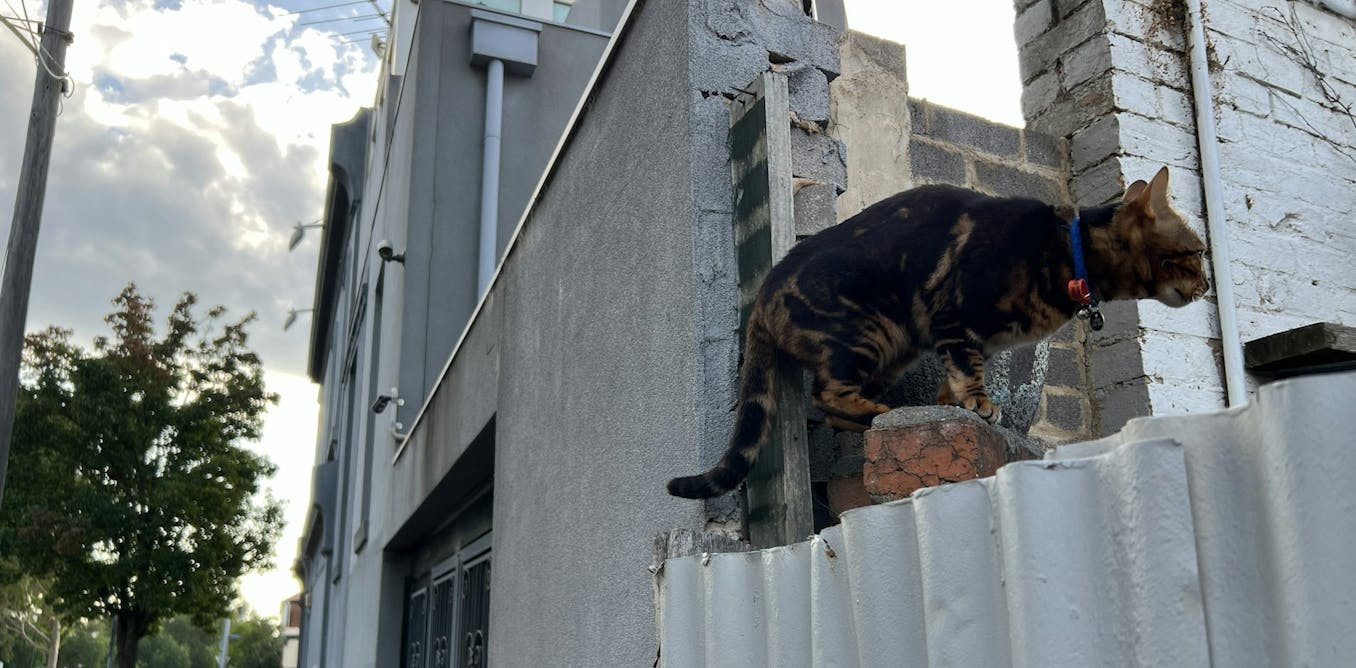[ad_1]
Australians have further pet cats than ever sooner than – higher than 5 million in full. With the rising amount, expectations on pet householders are shifting.
Many cat householders are literally voluntarily preserving their cats indoors or in secure runs, and native governments mandate it in some areas. Nevertheless most pet cats in Australia nonetheless roam native streets and gardens.
Broader adoption of preserving cats protected at dwelling would have large benefits for cat welfare, human effectively being, native wildlife and even the monetary system. So, should pet householders be required to keep up their pets contained to their property, as canines are?
We put that question to 1000’s of people in a nationwide survey in late 2023, and not too way back revealed the outcomes.
We found most people help requiring householders to incorporate cats. Merely one in 12 people (8%) are opposed. The time is prone to be correct for nationwide change in how we deal with our pet cats.

Jaana Dielenberg
Native councils are embracing cat containment
From November 1, Geelong Metropolis Council will likely be part of a fast-growing group of native governments in metropolis and regional areas that require pet cats to be securely contained 24 hours a day.
Larger than a third of native councils in Australia now require cats to be contained in a single day or 24 hours a day. Most are throughout the ACT and Victoria.
Given how good cats are at climbing and leaping, containing cats usually requires preserving them indoors or in secure runs.
The first causes cited by native govenments for these guidelines are:
- enhancing pet welfare: contained cats reside longer and extra wholesome lives with fewer vet funds because of they’re protected from traumatic accidents from vehicle accidents, canine assaults and cat fights, infections, illnesses and completely different misadventures.
- saving wildlife: 4 out of 5 cats allowed outside will hunt and kill a imply of two to some animals per week. With a whole bunch of 1000’s of pet cats in Australia, yearly this supplies as a lot as 6,000–11,000 animals killed in our suburbs per sq. kilometre and 323 million native animals killed nationally. Night curfews solely protect nocturnal species equal to possums.
- reducing nuisance to neighbours: containment results in a lot much less disturbance from cat fights and prevents the neighbour’s cat killing the birds and lizards residing in your yard or shut by park, which many neighborhood members price.
Most of the people effectively being toll of roaming cats
One different principal revenue is way much less talked about. Stopping pet cats from roaming would tremendously reduce prices of cat-borne illnesses.
Numerous illnesses which could not exist with out cats may be handed to individuals. These worth Australia higher than $6 billion a yr based totally on costs of medical care, misplaced income and completely different related payments.
Primarily probably the most widespread of these illnesses is toxoplasmosis, a parasitic an an infection that could be handed to individuals nonetheless ought to full its life cycle in cats. Australian analysis have reported human an an infection prices between 22% and 66% of the neighborhood.
Cat-borne illnesses set off considerable neighborhood harm, with an estimated 8,500 hospitalisations and 550 deaths from acute infections and as well as from elevated prices of vehicle accidents, suicides and psychological effectively being factors in contaminated people.
Pet cats are important to the fees of these illnesses domestically. In suburbs that do not require containment, you’ll uncover as a lot as 100 roaming pet cats per sq. kilometre.
Eliminating stray cats from our suburbs can be important to chop again sickness prices – merely considered one of many the reason why people should not feed stray cats.
Study further:
Cats carry illnesses that could be deadly to individuals, and it’s costing Australia $6 billion yearly

Jaromir Chalabala/Shutterstock
Most of us help containment
A protection requiring all cats to be contained has clear benefits. Nevertheless would not it have help? Tips solely produce benefits if people adjust to them.
That’s the reason colleagues at Monash School and I surveyed higher than 3,400 people on whether or not or not they’d help insurance coverage insurance policies that “require cat householders to keep up their cat contained to their property”.
We found a clear majority (66%) of people help cat containment. A strikingly small proportion of people, about one in 12 people (8%), are opposed. The remaining 26% have been ambivalent, deciding on “neither help nor oppose”.
Totally different surveys have found nearly half (42% or 2.2 million) of Australia’s pet cats are already saved contained by their householders.
Some councils can’t legally require cat containment
Our findings counsel communities would broadly help their native councils within the occasion that they moved to require cats to be contained.
Whereas councils are liable for pet factors, state and territory authorized pointers tremendously have an effect on what councils can and may’t do.
In New South Wales and Western Australia, state authorized pointers actually forestall native councils from requiring cat containment (other than in explicit circumstances, equal to in declared meals preparation areas in NSW).
Tips are merely the start
To boost compliance, councils need to put cash into talking new pointers and the reasons for them. After a grace interval, council officers may even wish to observe and implement the foundations.
Communities could have help too, notably if there are costs involved. Councils may, as an example, provide rebates for flyscreens to stop cats slipping out of open dwelling home windows.
Working with completely different colleagues in 2020, we surveyed Australia’s native governments about their approaches to cat administration. Most reported tiny budgets for cat administration.
Native governments should not be left to shoulder the worth alone. Federal, state and territory governments are moreover liable for Australia’s wildlife (and human effectively being). These governments have quite a lot of initiatives overlaying every feral and pet cats.
The Australian authorities collects A$3 billion a yr in GST from spending on pets. Diverting a small proportion into accountable pet possession purposes would make an infinite distinction.

Jaana Dielenberg
Containment has big backing
Our evaluation displays the neighborhood is ready for widespread reform of how we deal with all these cats.
Requiring pet cats to be contained is a sound protection different. Nevertheless to know the entire benefits, we moreover need to put cash into environment friendly communication for communities, current rebates to help embrace cats, and make sure the foundations are adopted.
This evaluation was a crew effort, involving Kim Borg, Melissa Hatty and Emily Gregg for the nationwide survey, and Sarah Legge, John Woinarski and Tida Nou for the evaluation on cat impacts and administration.
[ad_2]
